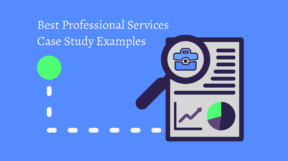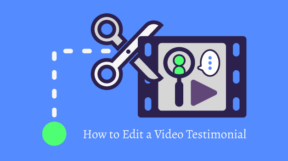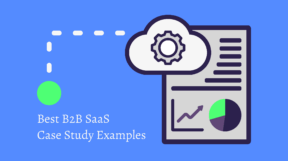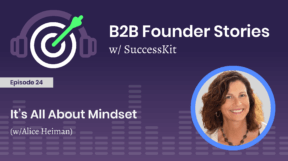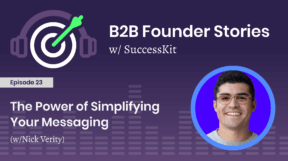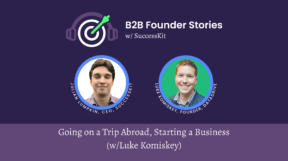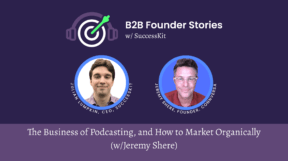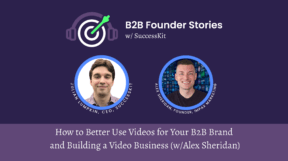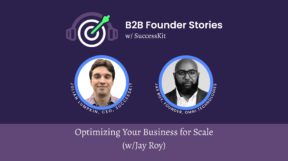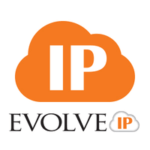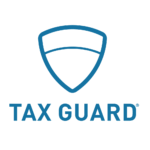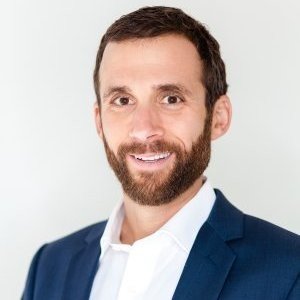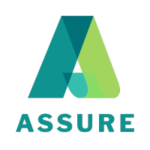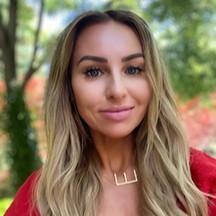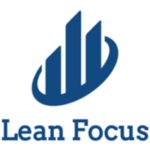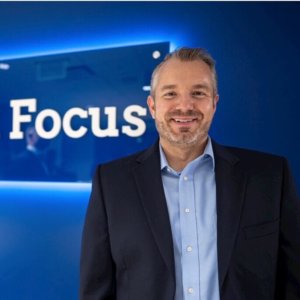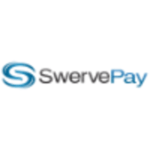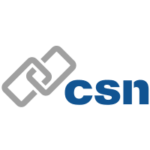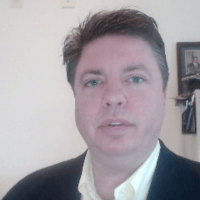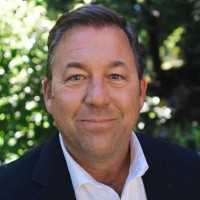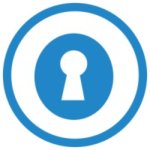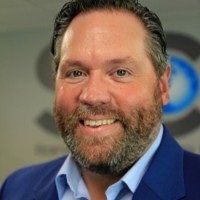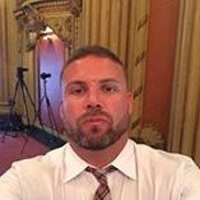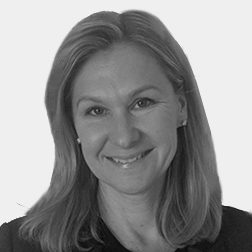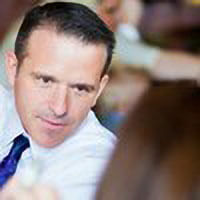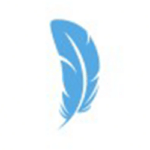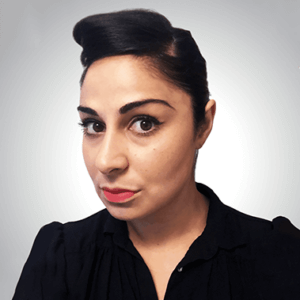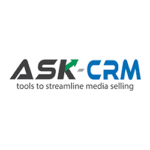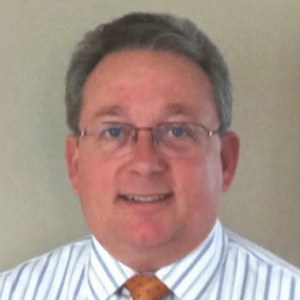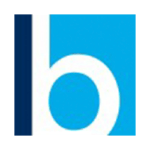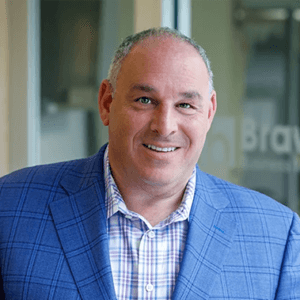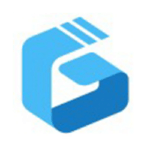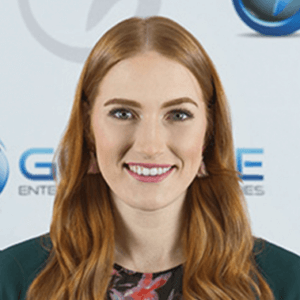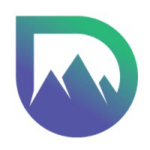Listen to this episode now on Spotify or Apple!
In the third episode of SuccessKit’s B2B Founder Stories podcast, Julian discusses how he started and grew SuccessKit. This episode will resonate with small to medium-sized business owners who enjoy hearing about similar-sized companies’ unique paths toward success.
In its earliest incarnation, SuccessKit looked quite different than it does today. As Julian mentions, it actually used to be a software company. SuccessKit originally was a product designed to serve as an organized library of Customer Success Stories created and tagged by in-house marketing teams. The idea was that sales teams could search the library for relevant customer stories using certain metadata.
Julian describes the highs and lows involved in transitioning SuccessKit into the business it is today. He shares his story of pivoting and changing the product offering, finding investors and potential buyers, enduring criticism, and taking risks.
Transcript of Podcast Episode 3: Taking Business Risks: The SuccessKit Story
Julian Lumpkin: Welcome back to the SuccessKit podcast. This episode is going to be a little bit different because instead of interviewing another entrepreneur, in this episode, I’m going to share my own story about starting and growing SuccessKit.
For some context, we are a small, healthy, service business. We create Case Studies, Video Testimonials, and White Papers for B2B companies. We have four full-time employees and we’re growing.
But our story is not your typical marketing agency. We got here through a very unique path for better and for worse. In this episode, I’m going to share real details about how I got here, investments I made into the company, revenue levels we’ve achieved, and our plan for the future.
I’m sharing this because I think it’s going to be helpful for other entrepreneurs and potential entrepreneurs. We hear stories all the time about huge successes and spectacular failures. But what we don’t hear very much about is companies like mine, that trudge through years of hard work to achieve some level of success.
Finally, I want to note that I tell the story strictly through my own eyes, but the truth is there were a lot of other people involved. Most notably Cliff Jackson, our advisor and director of marketing, and Dan, my close friend and someone who’s been an advisor to the company from the very beginning. And finally, my father, who actually did some free work for SuccessKit and advised me throughout the entire process. And now here is the story of SuccessKit.
The story of SuccessKit starts in 2016. I was the sales manager at a BC backpack company called Axial. I started in sales, moved way up to team lead, and then the sales manager. I was on a great career path to become a VP of sales, and who knows what else beyond then. I was happy with the path, I was loving my job and things were going great. I started to notice a trend at the time that the best sales reps used customer success stories much better than everyone else. I wanted to enable the rest of my sales team to use this leverage the way that they did. To my surprise, there weren’t many vendors or there weren’t really any vendors who were really focused on this specific problem.
This is where I started to get the idea to start my own company to solve this problem. At first, it was just an idea that I didn’t think would go anywhere. But as I continued to think about it and explore the market, I got more excited about it. I really couldn’t find anyone who was helping with this. And I talked to probably five to 10 other folks in sales, or founders or CEOs of businesses that could be a fit. And they all were also excited about the idea. I should note, there were some reasons for doubt at the time, because while they expressed excitement about the idea and gave me encouragement, they weren’t saying things like, “If you build that, I will buy it.” And in an ideal world, before you do a technology venture, you’ve got some hard proof like that. So it’s worth noting I had encouragement, I had real signs to believe I was onto something, but I didn’t have that final level of proof that, say, a venture capital firm would want to see before diving into something.
That said, I was so interested in the idea. I was so convinced that I would have the right idea, that at the end of 2016, I resigned from my job to go all in building SuccessKit. The first order of business, once I resigned from my job, was finding a development team. Fortunately, pretty quickly I found a small team that I liked and trusted and came highly recommended, to build the first version of the application that I imagined. What I felt would be something that would give the initial value to help companies organize and distribute their customer success stories. We spec’d out an application at $60,000. In order to fund this, I invested my own money. We’ll circle back to this because this was a questionable decision that may have been right and may have been wrong. You can make your own judgment as you hear the rest of my story.
The reason that I decided to go ahead and build a product, instead of, say, putting together super great mockups, making a bunch of sales, conditional sales, which is what the conventional wisdom says before building a technology product… The reason I didn’t go that direction is because I felt that in order to make this work, I needed something that I could get onto a screen share, or a Zoom or a demo call with a decision-maker and show them and sell them. That’s what my background was in. And I really felt confident that if I had something, I’d be able to make some sales.
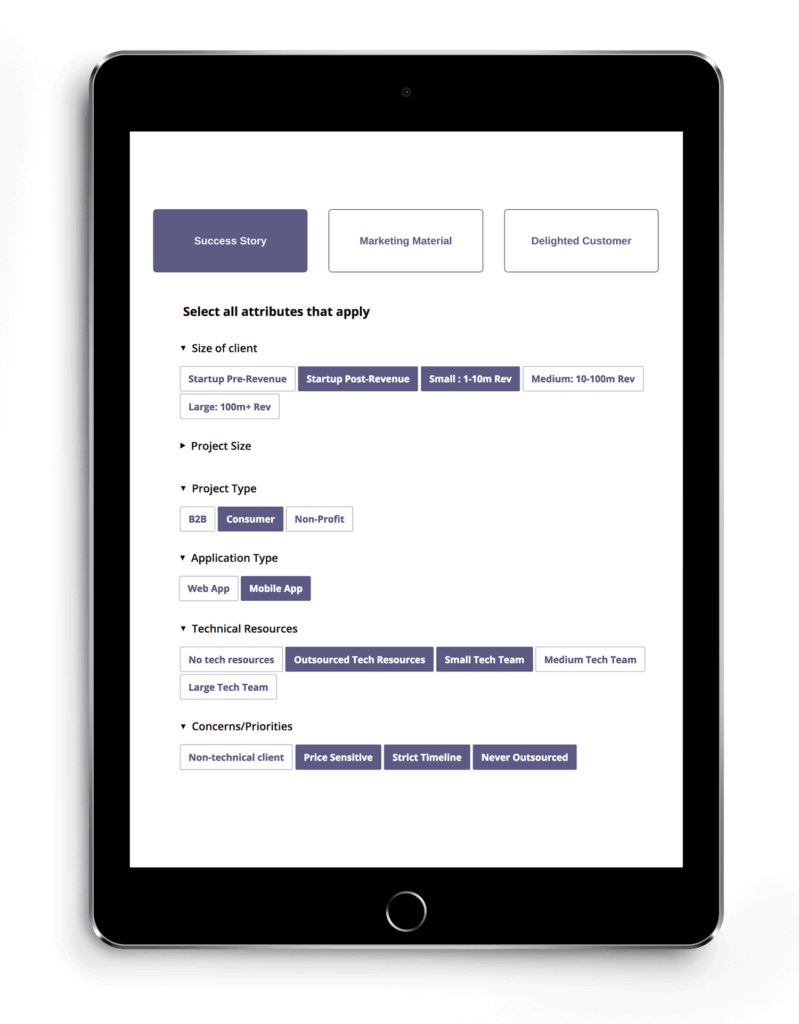
After a couple months, to my delight, the application was built on time and on budget. Now the biggest hurdle came. It was time to see if I could sell this for real money to real people in the market. So it’s 2017, I had left my job, I invested a hundred thousand dollars and I had the application built. Because I wasn’t taking a salary at the time, I had to leave my apartment in Manhattan and move back in with my parents on Long Island.
Initially, I thought this was going to be one of the most difficult parts of this journey. As it turned out, it wasn’t bad at all. I got my own office, I got to stay in my old room, I relieved a ton of financial pressure on myself. And living with my parents, ultimately as an adult, wasn’t that bad.
Within the first month, I was able to get a couple friendly sales. My former boss, John Cho, who had been an advisor as I began the company, stepped up and became my first paying client. Soon after, someone else I knew through my old job also became a paying client. These were great because it made sure I had some people using the product as I was going to sell it. Now it doesn’t mean selling was easy. I had no marketing budget, no credibility, and let’s be honest, not much of a product.
I did things that some would consider the hardest way, but the only way I knew how at the time, which was to make cold calls. Anyone who’s been in sales knows how difficult it is to generate interest from cold calls. It’s really difficult. It’s even more difficult when you have a brand new company, a half-baked product, and you’re still figuring a lot out as you’re making these calls. That said, because I was speaking to someone one on one, I was through volume, through making enough cold calls, I was able to identify people that really wanted to be early adopters. They knew the product wasn’t done, but they were excited by the fact that I was working on something, that I was hustling, that I was cold calling now.
So by taking this very difficult approach, I think was able to get us over one of the most difficult humps of starting a B2B technology, which is to get those first five or 10 users. Again, in an ideal world, I would’ve had 10 companies already signed up to use this product when it was built, but I didn’t. But I was able to use my skills in cold calling, working really hard for a while, to get over this and get some initial clients.
That said within a few months, I was able to make some sales. It felt like magic. I had built a product from nothing. I had developed clients from nowhere and while very small, I had a tiny little business running. At least I thought. I had four or five people using the product, they were all paying me. And I believed that this traction was going to be able to allow me to raise funds, bring in partners to accelerate this. I needed to develop a product. I needed to develop a sales team in order to grow. And I thought that what we had done so far was going to be sufficient to do that. It turned out raising money and taking those next steps was going to be much harder than I hoped.
So I was about a year into my venture, had an application that I had built from scratch. I had some actual clients, businesses paying me money to use our product. And now I turned my attention to finding investors. It was always my primary plan to find investors for the business. I wanted to build a company that generated its own revenue so I had some other options, but given my background in the VC tech world, the goal was always to raise a seed round, so that I could bring in the type of partners and employees. I needed to really grow the business.
I thought I had enough traction at the time, based on my previous experience in management and the traction we had got with this product I built to find those investors. When I went out, looking for them, talking to actual [inaudible 00:09:20] investors, VCs, folks that ran seed funds, it was brutal. They were looking at our team, traction, product, and future. And in each of those categories, while I had some traction, it just wasn’t enough for what a venture capital firm is looking for.
They were complimentary of the business. They thought it was a nice, small, perhaps lifestyle business that I was building. But they couldn’t see the path to going huge. In hindsight, they weren’t wrong. We didn’t have the team in place at the time. Our traction, while real, was not showing that kind of crazy up into the right growth that indicates a venture capital type investment. Our product, while functioning, was very simple. And our plan for the market, while I thought was solid at the time, just wasn’t good enough for what they wanted to see.
The other thing I was looking for at the time was a tech partner. I probably should’ve started this process earlier on. It was difficult to find someone that I trusted, had the right skills and I felt would care about the company enough to really be a partner. Since I already had some traction, I didn’t want to give up 30 or 40 or 50% of the company. So this also made it very difficult to find the right partner. I did come close with one person, who was a freelancer, great developer, and wanted to be more entrepreneurial and take on a venture like this. Unfortunately, the terms he was looking for, we just weren’t able to come to a deal.
After about a year in this mode, focused primarily on finding investors or finding a tech partner, I was able to get us into an online accelerator called BoomStartup. It was imperfect. It wasn’t like joining Y Combinator, where once you get in, you’re pretty much guaranteed attention from investors and traction. But it was real. I had to work hard to get us into the program, because the metrics around our technology were still not that healthy. So I worked directly with the people there to convince them that my idea had legs, even if our traction was limited. And we were ultimately able to get into that program.
They gave us a lot of the best practices. They introduced me to investors, and this kept us going in all directions. I started to get some momentum. I was able to meet three different angel investors through them that ultimately invested into SuccessKit. It wasn’t enough money to start really hiring and building out a product. But at the time, I think it was about $60,000 total, along with our client revenue, it kept us going. It also made me believe that with a little bit more traction, and some of these investors on board, we’re going to be able to raise that seed round. After spending six to nine months bringing in these investors, working on our product and business, such that it was presentable to the type of investors that we wanted, it became clear that the type of investment I was looking for was not going to happen.
So let me back up. At this point, I’m about a year and a half in, sales had slowed down because of the effort and attention I was giving to raising money and trying to make us look like an investible company. The product, while I was getting some positive feedback from clients, was not developing into anything impressive. I had two primary challenges. One, with only about seven or eight clients, I was getting different inconsistent feedback. So I didn’t even know exactly what I needed to build. At the same time, I didn’t have a tech partner, so I was relying on outsourced developers who were not able to build very much and as such, they really failed to develop. So this is where I was at our lowest point. I was spread thin, I was going after the investment, I was trying to get a partner, I was trying to build the product in an inefficient way.
I was trying to develop new sales, but with everything else I was working on, nothing was working great. And we were at a real low point. I still wasn’t taking a salary, I was still at home with my parents, and candidly, I was dreaming about going back to a regular job. At this point, without too many options left, we started seeing if we could do more work for the clients. That is to say, instead of just using our application and us helping them use our application, how can we help them solve the problem they have of collecting and documenting success stories outside of our application? When we first started, a lot of it was focused on reaching out to our clients’ clients to see if they would participate, which we did as a service, getting permissions and then writing and designing some super simple what we still call Customer Success Stories, but pretty quickly pivoted to calling their more formal counterpart Case Studies.
It was clear there was a market for this. I was still figuring out if it was a good business to be in, how to do it, what part of this service made sense to offer. But I knew there was something there. It’s worth noting at this point, I still thought that funding—that is, raising a seed round—was the ultimate plan and goal. So I was doing this service for the clients, with the intention of bringing on more clients, keeping us afloat and eventually being able to raise that round. The most exciting part about offering the service is that it moved our revenue from essentially a nominal $5k a month in pure SaaS revenue, to all of a sudden $10 to $15K of revenue. Certainly not a lot of money, not the reason anyone goes out and builds business, but this allowed me to start taking a salary and move out of my parents’ place.
I ultimately decided to come down here to Raleigh, which was great, and it really changed the dynamic of the business. No longer was I a kind of pie-in-the-sky entrepreneur, living at home, trying to create something huge. I still have had some aspirations, but now I had a real business. It was paying me, we were bringing in money, We were getting things done for our clients. And that was really exciting.
After about six months in this process, getting some traction with clients, providing the different services, I sat down for a meeting with another investor. This was someone down here in the Raleigh area, it was a very well-connected angel investor that participated in a lot of seed rounds. The meeting was a disaster. This gentleman very bluntly told me that I really didn’t have any technology offering at all. I debated him.
I was still convinced that there was some product being built and did admit we were propping it up with the service offering, but I still felt that we were on our way to building a SaaS offering. His brutal feedback made me think a lot. It didn’t invite an immediate change, but over the next couple months, a couple conversations with some really important advisors to the company, and I realized it was time to give up on the technology and the idea of raising a seed round. I don’t know the exact date that I did that, but it was a huge turning point in the company.
Now, instead of just offering the service to get by on a day-to-day basis, I could commit to really building out a service offering, and see if I could turn it into a profitable business on its own. As I started to focus on the service offering, it got traction, I was making a lot of sales. I was excited about it. I was getting some really positive feedback from some clients, but also still some imperfect feedback from other clients. It took a lot of tinkering.
I want to mention how important my two good friends and advisors, Dan Litt and Cliff Jackson, were throughout this process. They dug in with me to figure out how to create this service. Creating Case Studies was never a natural business for me to run. My background was in sales, not marketing. So I really leaned on them to help me develop this offering. Early on, there were some real concerns. We had some negative feedback from a few clients and it really stung. At the time, I thought maybe this meant it wasn’t really working. In hindsight, it’s pretty clear it’s because we’re just starting and figuring out what we’re doing. Well, after three to six months of working on the service, things to really improve.
We got a lot of positive feedback, each project was going smoothly and consistently, the service worked, revenue was growing very slowly, but I had a real little business. And for the time being, that was enough. So, heading into 2019 things were working. At this point, the entire focus became growth. The business itself was small, but seemed generally healthy. I could pay my salary, our work got done on time, our clients liked us. Things were going pretty well. The problem, like I mentioned, was growth. I was the only full-time employee, and at this point, we’re doing about $20K a month in revenue, an area we got stuck in for quite a while. It was slow, painful growth. And at the time, any issue from our client not loving our service absolutely killed me. I was so connected to the work and the business that even the slightest negativity from any client could send me into a mental tailspin, telling myself this wasn’t going to work, I didn’t have a real business.
We kept working through it. Three to six more months of tinkering, and we got to the point where we weren’t getting any client complaints. People were always happy with the Case Studies we delivered, and some of our clients were absolutely thrilled. This is where I started to get really excited about the business again. But again, that problem that came back of just not being able to grow fast enough. So I was, again, stuck in this area of having a nice little business, something that was working, but I was still unsure was going to work out long term for me. Twenty-twenty, as we all know, brought the pandemic. This impacted our business, but not in the most direct way. That is to say, people still bought Case Studies throughout the pandemic. We’re a B2B company; that certainly helped. There was some slowdown, but things kept moving.
What it really did, was give me the time and focus and perspective to look at things in a new light. The truth was at this point, four to five, four years in, the slog, the slow grind was eating me up and the traction we were getting just wasn’t enough to warrant the effort I was putting in. So I started to look at my other options. What I had to do was sell the little business, which is something that I seriously considered during 2020. I used a site called MicroAcquire and was able to connect with some folks that were interested in buying SuccessKit. Again, not for millions of dollars, but for hundreds of thousands of dollars, so that I would be able to have some element of return or success from the business. And I was really thinking a lot about the next steps in my career.
I talked to several buyers, I learned a lot, but ultimately none of them had, let’s say, an offer I couldn’t refuse. If I got a huge offer, I probably would’ve taken it. Ultimately I didn’t, but I learned so much from that process. I talked to potential strategic acquirers, so other agencies that would take SuccessKit and build us into their business. I talked to financial buyers and I even talked to a couple competitors. At the time, once I started to apply the lessons I had learned, everything started to change. It became clear to me while I was working on the business for such a long time, our real product offering, what we’re selling, was still new. And I was rushed to get results when really I just needed time to work out the details of our process, our product, and our marketing. And that’s exactly what I did during 2020.
This led to real growth. By the end of 2020, I no longer wanted to sell SuccessKit. I saw a path to really growing and it was good, profitable work, I knew that I could build something that was valuable, something that our clients loved and eventually something … a place that our employees like to work. So going into 2021 with this new growth, the next stage for me was bringing on a full-time team and this process went remarkably well. I was able to hire two of our best contractors to full-time roles. That’s Wilton, our Director of Content, and Stef, our Director of Writing and Editing and Design. At this time, we’re also exploring creating Video Testimonial versions from our clients. I was working with a contractor, who I found was also ready to take a full-time job. That’s now Matt, our full-time video editor.
Having this full-time team in place was a game-changer. Not only were each of these folks better at doing the actual jobs than either I was doing, or the contractors we’re using, but having them take full ownership led to a better process, and it allowed me to focus on other things like sales, business development, our own internal marketing— things I’m actually much better at than creating Case Studies.
This takes us to where we are now, the end of 2021. SuccessKit is a small, healthy business. I have a small team, four full-time employees. Our process for creating Case Studies runs incredibly smoothly. Our clients love our work. And we’ve expanded to offering Video Testimonials, White Papers, and a couple other types of written content. Importantly, I really like the job I’m doing now. I have a great team to handle most of the work, and I get to focus my attention on doing things like this podcast, marketing, sales, and business development.
To give you a sense of financially where we are, we’re doing about $40,000 of monthly revenue, and we’re growing really quickly. That puts us at a rate of doing about a half-million dollars a year revenue. And I’m really confident we’ll be at $1 million of annual revenue in 2022. I see a path for us growing beyond that, to 3 million, perhaps even as much as 10 million in revenue over the next three to five years. When I started the company, we had huge ambitions. I put in a lot of money with the hope that I could raise money and turn SuccessKit into something huge. The path has obviously changed, but when I look at where we are and where we can go, ultimately I’m happy with the decisions that I made and excited to see what happens next with SuccessKit.
This podcast will continue to document our journey. I’ll learn from our clients, from other entrepreneurs that have scaled to seven- and eight-figure businesses, which is where I want to be. And I’ll continue to keep my audience updated on our own progress as we go through it. Thanks for listening.
Conclusion
Subscribe to the B2B Founder Stories podcast on Spotify and Apple and never miss an episode!
If you have an idea for a future topic you’d like addressed or if you’d like to be a guest on the series, contact Julian via the form on our Learn More page.
![Featured image for the blog post titled Taking Business Risks: The SuccessKit Story [PODCAST]](https://successkit.io/wp-content/uploads/2021/12/successkit-podcast-episode-3-success-kit-story.png)



